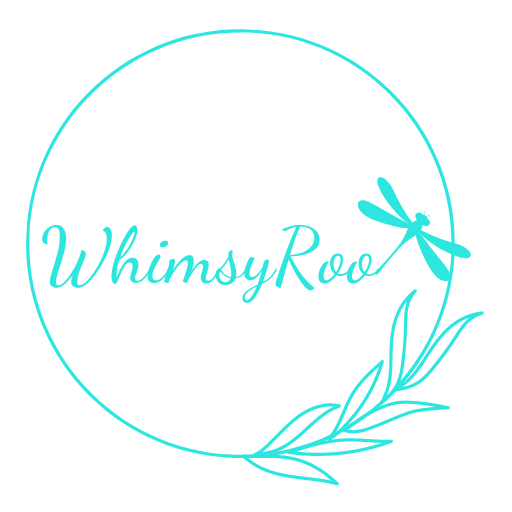English Angora Rabbits are our first real farm animals on our microhomestead. We’ve had them for over a month now and they’ve been living in rabbit cages from Tractor Supply. But I decided to DIY rabbit hutches for them. The Dumour crates are too small for Angoras unless they can be let out to exercise often. Most rabbit hutches don’t have wire or slats for their pee and poop to drop through. I also wanted something that could double as an outdoor pen they could graze and forage in. Nothing pre-made fit exactly what I wanted and was too expensive for what I was getting. These from Amazon are ones I considered.
*This post contains affiliate links. I will earn a small commission if you make a purchase from one of these links. For my Full Disclosure click here.*
The girls had a wooden playset my dad built. This year we had a really bad storm with jet stream winds and the swing set was knocked over. Much of it was salvageable and taken to the new house, but the tower was not. Made of 4x4s, 2x4s, and fence pickets, I decided to cut away the still usable parts. These would make great DIY rabbit hutches!
My plans, if you can call them that, all included the 4x4s and 2x4s and some hardware cloth. I also purchased some plywood and 1x1s and used some thin plywood I had on hand from another project. I’ll give you a shopping list at the end once I take you through all my trials and errors of my DIY rabbit hutches first. I made DIY Rabbit Hutches from scrap wood and this is what happened.
Trial #1 DIY Rabbit Hutches
I need two separate Rabbit Houses. Pepper is a female and Snowball is a male, and rabbits are basically always ready to mate. We also found out the hard way that they can be very clever about getting around obstacles keeping them from each other. More on that later.
My first DIY rabbit hutch was two story. My idea was to have three sections, one for Snowball, one for Pepper, and one for grazing/playing at separate times.
I was actually happy with the way the two story hutch turned out at first. I even made a ladder that could be put up to keep the rabbits from going up or down. Unfortunately when I went to bring it inside, it was too big to fit through the door!
Down it went. On to try #2.
Trial #2 DIY Rabbit Cages
The smallest door in my house (and I double checked with Google) was 28 inches. I cut everything down to 26 inches wide. After I rebuilt I honestly like this hutch better! Now that I had a better idea of how to put everything together the process was faster. I went on to make the third living space too.
However the two-story frame was too heavy for me to get in and out of the house by myself. The whole point of the lower floor was to have a grazing space. Also, moving day was fast approaching and the whole hutch would be easier to move if dismantled.
Down again.
Trial #3 DIY Rabbit Hutch
Finally we were mostly moved into our new home. It is not exactly the homestead of my dreams, you can read more about that in this post. But my rabbits needed housing. And soon. Pepper was pregnant and due any day!
I gave up on the two story idea and made two almost identical cages. These also had several iterations, but I’m still counting them all as the 3rd and final trial. What I finally settled on was a bottomless cage, with solid plywood on each end, hardware cloth on the sides, and a plywood roof with hinges. For the bottom, I made a separate frame from 4x4s with a 2×4(though I would have used another 4×4 if I had one long enough)in the center for extra support. I stapled ½ inch hardware cloth to one side.
I measured and remeasured so many times to make sure the cage part would sit on the 4x4s of the floor, and still I had to take the floor apart multiple times to get the width right! But now I have a cage that can sit on the grated floor or be moved outside for grazing.
Final additions
The floor works as intended and the rabbit poop and pee all drop through the holes. The next problem was what to use to collect it. Stupidly the first week I used nothing. The poop and hay was easily swept and scooped, but the urine left some stains on my brand new floors that I’m still not sure how to get out. The next week I used puppy pads. The bunnies liked to pull these up and rip them to bits. What is working right now is a waterproof pad I got on Amazon. It’s supposed to go under a baby’s highchair for easy clean up. Then I put a layer of hay or cedar shavings on top of that to soak up the urine.
On “Poop Day,” which is what I call my weekly cage clean out day, I take the bunnies outside while I fold up the mat like a burrito and dump the cedar shavings or hay out into my compost bin along with the collected pee and poop. The mat gets a good rinse with the hose and dried before taking it back inside. Then I layer up the mat, bedding, and cage again.
I also added a kitten sized litter box for each bunny which has pine pellets. The bunnies do use it, but not exclusively. Snowball seems to use his more than Pepper uses hers.
The hardware store had porcelain tiles and I bought. I laid one in each cage for the rabbits to lay on. This provides a cool place to stretch out when they get hot and relief from the wire on their feet. I would have preferred to give them ¼ inch hardware cloth to be easier on their paws, but the poop wouldn’t fit through that size. I tried.
If you’d like to see the video of how I put together the DIY Rabbit Hutches, all three variations, that will be right here.
Final cuts and supplies
4 2x4s cut 45 inches
2 plywood pieces 24×24 inches (mine were 20×25 but 24×24 makes more sense if you’re buying new wood)
2 ½ inch plywood pieces 24×24 inches
2 lengths of hardware cloth (½ inch or ÂĽ inch) 48×24″
2 3 inch hinges
1 bolt lock
For the flooring
3 4x4s cut 48 inches
2 2x4s cut 28 inches
1 length of ½ inch hardware cloth 48×28 inches
Tools required
Screws
Staples
Saw (I used my circular saw for the most part)
Make 48×24 frames using the 2x4s for the length and the plywood for the ends. Cover the two long sides with hardware cloth using the staple gun.
For the roof, use the other two pieces of plywood. I attached one with screws and the other with a hinge and bolt lock. But eventually I will make both with hinges for easier access to the bunnies.
The floor is three 4x4s laid parallel. Two make the edges and the middle one is for support. I held these together in a very complicated way using 1x1s. But if you’re not just using wood scraps, I would get 2 2x4s cut to 28 inches and secure them to the top and bottom. Then attach the ½ inch hardware cloth with the staple gun.
Lift the cage part of the DIY Rabbit Hutch and set it on top of the outer 4x4s. Or you can lift it and take it outside for grazing. I attached large water bottles like these to the outside.
That’s it. It’s not very pretty but it works and that’s what’s important. Eventually I will either rebuild or buy a prefab hutch for my rabbits. I’d love to see some of your “it’s not pretty but it works” homestead DIY projects! Maybe I’ll do a compilation sometime.


